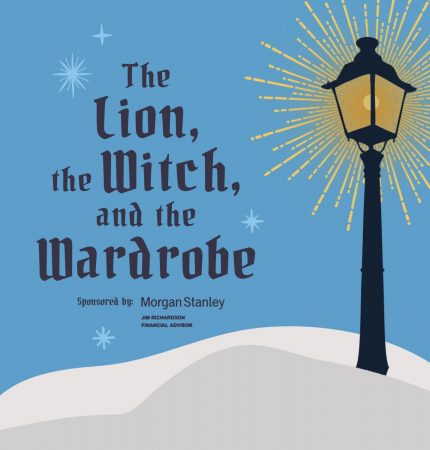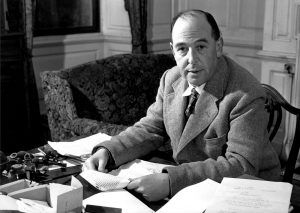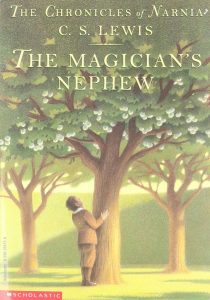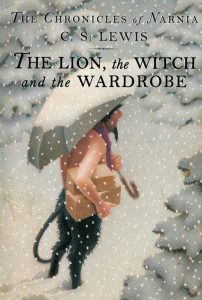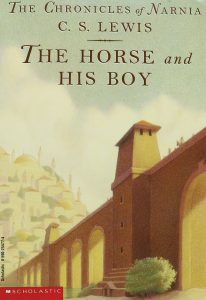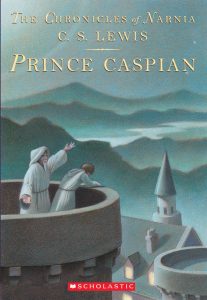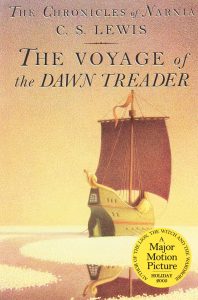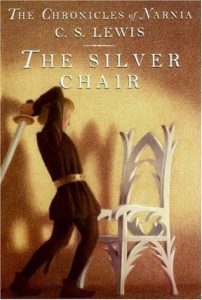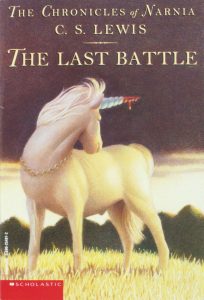The Lion, the Witch, and the Wardrobe Play Guide
What to know – before the show!
[bs_collapse id=”collapse_531e-cd4c”]
[bs_citem title=”Play Synopsis” id=”citem_192f-fc17″ parent=”collapse_531e-cd4c”]
This dramatization of C.S. Lewis’s classic story recreates the magic and mystery of Narnia as told by Peter and Lucy. Lucy, while playing hide and seek one day, discovers that her hiding spot in the wardrobe leads to a magical place. While there, she meets Mr. Tumnus, a faun, who Lucy agrees to have cocoa with, not knowing he is the White Witch’s spy.
On the next rainy day, Edmund and Lucy enter the land of Narnia. Edmund finds himself faced with the White Witch, who offers him Turkish Delight. The Witch realizes that Edmund and his family are the children spoken of in a prophecy resulting in the Witch’s demise. Trying to trick Edmund, the Witch offers to make him a prince, ruling over his brothers and sisters, if he brings them to the queen’s castle.

Then Lucy and Edmund return with their brother and sister to meet Mr. Beaver and learn the truth about the White Witch’s evil plans for Narnia. Mr. Beaver tells the children the curse of the White Witch can be broken with Aslan’s help. As the group sets out to find Aslan, Edmund decides to go and seek the White Witch’s castle. When he finds the White Witch, she is not happy to see him without his brother and sisters and they set off to find them, even as her curse is beginning to give way. The other children find Aslan and tell him about Edmund. They decide they must find the queen and retrieve Edmund.
When the two groups meet, there is a great battle. Aslan is slain, but a magic much deeper than the White Witch causes Aslan to return. All of the creatures under the Witch’s curse are rescued. Edmund, in a moment of inspiration, breaks the Witch’s wand in two. Narnia is freed. Edmund, Lucy, Peter, and Susan are crowned kings and queens and govern the land of Narnia for thirty years until one day they return through the Wardrobe to find themselves young children once again. [/bs_citem]
[bs_citem title=”Play Before the Play” id=”citem_f87d-2365″ parent=”collapse_531e-cd4c”]
ADVENTURE COLLAGE
The Lion, the Witch, and the Wardrobe is an adventure story focusing on the journey of 4 siblings. Ask your students to think of a memorable moment or fun adventure they shared with a sibling or family member. Have students create a collage about that memory using newspapers, magazines, or items from home. Allow students to share their memory and collage with your class, then hang them up in the room to remind your class of how adventurous they can be!
Now have students take that adventure and turn it into a personal narrative or story. If you want, have the class embellish or expand upon the details to make their stories truly unique and wonderful. Are there elements of fantasy or magic that can turn their story into the next great idea?
KAS: VA:Cr2.3.5; VA:Cr2.1.3
THE MYTHICAL LAND OF NARNIA
The Lion, the Witch, and the Wardrobe includes many fictional characters and creatures. The author, C.S. Lewis, borrowed many of these magical creatures and figures from different cultures such as Greek and Roman traditions and Norse mythology. Below is a selected glossary of these mythological creatures that you can review with your class. After sharing the descriptions, use them with the next activity.
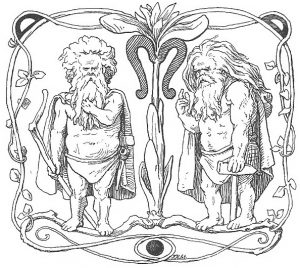 Dwarf(ves)
Dwarf(ves)
Origin: Norse Mythology
Physical Description: A short, stocky, human-like creature. They are generally physically strong.
Abilities: Excellent miners and smiths, dwarves excel in the arts of the earth. They are famed to be skilled warriors.
Habitat: Caves, tunnels, and mines
 Faun(s)
Faun(s)
Origin: Roman and Greek Mythology
Physical Description: Has human arms, torso, and head with goat-like horns, ears and legs.
Abilities: Skilled in music and famed to be excellent dancers. Fauns are fond of trees and nature.
Habitat: Forests and woodland areas
Talking Animal(s)
Origin: Multiple Origins; Fairytales
Physical Description: Animals with human traits, such as speech, walking up-right, and wearing human clothing.
Abilities: Talking animals have talents respective to both humans and animals.
Habitat: Various
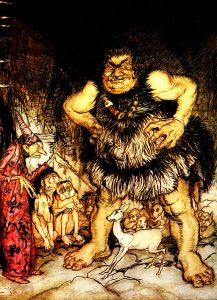
Ogre(s)
Origin: French and Italian Folklore
Physical Description: Larger than humans. Ogres are often depicted with a large head, abundant hair, a huge belly, and a strong body.
Abilities: Physical strength
Habitat: Mountain, caves
Centaur(s) 
Origin: Greek Mythology
Physical Description: Its head and torso are human and the rest is that of a horse.
Powers/Abilities: Seeing the future and great with battle tactics.
Habitat: Various, usually found in the wilderness unless domesticated into society
Ghoul(s)
Origin: Arabian Folklore
Physical Description: Shapeshifting demons who can become undead humans or animals.
Powers/Abilities: Shapeshifting, regrowth of body parts, and immunity to pain.
Habitat: Burial grounds or other uninhabited places
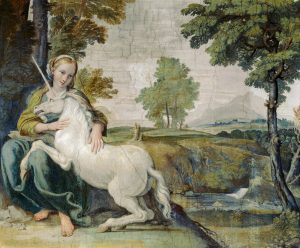 Unicorn(s)
Unicorn(s)
Origin: Greek and Roman Mythology
Physical Description: The unicorn is horse-like with a horn projecting out of the head. In some cultures, unicorns have the head of a deer.
Powers/Abilities: The unicorn horn has magical abilities that can cure sickness or disease.
Habitat: Prefers the woodlands away from the evils of humanity
Nymph(s)
Origin: Greek Mythology
Physical Description: Typically female, nymphs take the appearance of their habitat (i.e. tree nymphs resemble trees).
Powers/Abilities: Wisdom, Nature
Habitat: Mountains, forests, rivers, springs
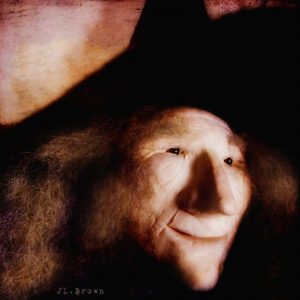
Witch(es)
Origin: Multiple Origins; Fairytales and mythology
Physical Description: Human in appearance, various ages. Most often female
Abilities: Witches are skilled in magic of all varieties.
Habitat: Human dwellings
Hag(s)
Origin: German folktales
Physical Description: A fairy or goddess who looks like a wizened woman.
Powers/Abilities: Shapeshifting; magic
Habitat: Hags seek out places away from people
KAS: SS:3.2.20
CREATE YOUR OWN MYTHOLOGICAL CREATURE!
Read the descriptions of mythological creatures above with your class. Discuss what these creatures might look like. Then ask each of your students to pick one of the creatures to study or let them create their own. Have the class share their findings in one of the following ways:
- Creature Report: Your students can write a report, as they would about natural animals, on these creatures to stretch their imaginations.
- Newspaper Article: Ask your students to imagine what would happen if someone actually discovered one of these animals! Have them write a newspaper article about such an event.
- Creature Journal: Let your students put themselves in the place of these creatures. What would a normal day be like for them? Have your students write a journal entry recounting a day in the life of one of the Narnians or a creature they’ve created!
- Draw It: On a blank sheet of paper, have your students illustrate this creature in its habitat. Think about how big or small it is. What color is it? What does it eat?
KAS: WR:3.3; WR:3.7; L:3.2
[/bs_citem]
[bs_citem title=”Contextual Article” id=”citem_1003-b8f8″ parent=”collapse_531e-cd4c”]
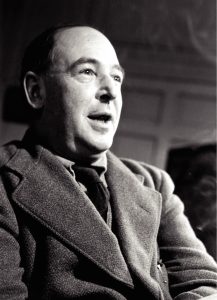 C.S. Lewis was born on November 29, 1898 in Belfast, Ireland. Though his full name was Clive Staples Lewis, he published his Chronicles of Narnia under the pseudonym C.S. Lewis and preferred to be called Jack in person. He was an influential English and Literature Professor at both Oxford and Cambridge Universities for most of his life. Lewis was a member of the informal club The Inklings, which began at Oxford University. This group of literature fans included Owen Barfield, Charles Williams, and Lewis’s good friend J.R.R. Tolkein, author of The Lord of the Rings series.
C.S. Lewis was born on November 29, 1898 in Belfast, Ireland. Though his full name was Clive Staples Lewis, he published his Chronicles of Narnia under the pseudonym C.S. Lewis and preferred to be called Jack in person. He was an influential English and Literature Professor at both Oxford and Cambridge Universities for most of his life. Lewis was a member of the informal club The Inklings, which began at Oxford University. This group of literature fans included Owen Barfield, Charles Williams, and Lewis’s good friend J.R.R. Tolkein, author of The Lord of the Rings series.
Lewis had no children of his own, but dedicated The Lion, the Witch, and the Wardrobe to his goddaughter, Lucy. Later in his life, he married American poet Joy Gresham who had two sons, David and Douglas. Douglas was extremely fond of his step-father and was co-producer of the theatrical film adaptations of The Chronicles of Narnia.
Continue the adventure by reading the entire series by C.S. Lewis:
[/bs_citem]
How to grow – after the show!
[bs_citem title=”Extend the Experience” id=”citem_0eb0-4e3a” parent=”collapse_531e-cd4c”]
SEQUENCE OF EVENTS
The story of The Lion, the Witch, and the Wardrobe is full of excitement.
See if your class can put the plot into the correct sequence. Using the key plot points below, ask a group or pair of your students to illustrate one of the following events. Once all drawings are completed, have your class work together to hang the pictures in the order each occurred in the story. For an added challenge, have each group create a frozen image of each plot point and ask the rest of the class to put the events in order to really see the story come to life!
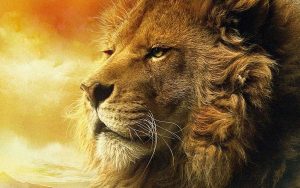
- Lucy enters Narnia.
- Edmund enters Narnia.
- Peter and Susan enter Narnia.
- Edmund meets the White Witch.
- The children visit the Beavers’ home.
- Lucy meets Mr. Tumnus.
- Aslan takes Edmund’s place in punishment.
- Aslan returns.
- Children are crowned Kings and Queens of Narnia
- Aslan frees the statues.
- Aslan meets the Witch at the Stone Table.
KAS: TH:Cr2.1.3b; R:4.5; R:4.7
FROZEN IN NARNIA
Review the events of the play with your students. Ask them what they think Narnia was like before Lucy first entered through the wardrobe? How did the children change Narnia during their time there? What do your students think will happen to Narnia after the children leave? Now, divide the class into groups of four or five and have them create a tableau, or frozen image, for each idea:
- Narnia before Lucy’s visit
- A moment from the play
- Narnia after the children leave
Remind students that a tableau or frozen image does not involve movement of talking but illustrates or represents the group’s ideas using their bodies. As each group presents their picture, ask the rest of the class to title or define what is happening.
KAS: TH:Cr2.1.3b; TH:Cr2.1.4; TH:Re8.1.4c
MAKE YOUR OWN TURKISH DELIGHT
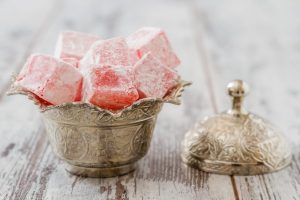
Edmund loves eating Turkish Delight. This confection, also known as lokum in Turkish, is based on a gel of sugar and starch. While the exact origins of the treat are unknown, Turkish Delight is known to have been made in Turkey and Iran as early as the late 18th century. You can watch a video recipe here or use the recipe below to make your own Turkish Delight!
Ingredients:
- 2 cups granulated sugar
- 1 1/4 cups water
- 1 lemon, the peel cut into strips, the juice squeezed and strained
- 1 orange, the peel cut into strips, the juice squeezed and strained
- 4 tablespoons unflavored powdered gelatin
- 2 tablespoons confectioners’ sugar
- 1 tablespoon cornstarch
Directions:
- Dissolve the granulated sugar in half of the water over medium heat.
- Add the strips of lemon and orange peel and the juices.
- Bring the mixture to a boil and simmer for 15 minutes.
- Soak the gelatin in the mixture for 5 to 10 minutes.
- Strain the mixture into a shallow, dampened pan or onto platters, and let it set for 24 hours.
- Cut the Turkish Delight candy into 1-inch squares.
- Sift the confectioner’s sugar and cornstarch together into a shallow dish.
- Roll the pieces of Turkish Delight candy in the mixture.
- Store the Turkish Delight squares in boxes with more confectioners’ sugar and corn starch between each layer.
KAS: SS:5.2.16; SS:5.2.17 [/bs_citem]
[bs_citem title=”Suggested Reading” id=”citem_db8c-52ac” parent=”collapse_531e-cd4c”]
If you like tales of adventure, talking animals, and faraway lands, you might enjoy these books as well:
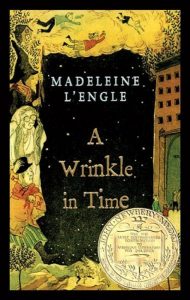
A Wrinkle in Time by Madeleine L’Engle
Can Meg navigate the Tesseract to get her father back?
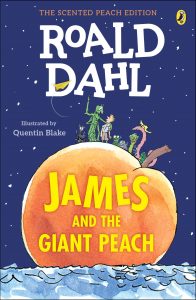
James and the Giant Peach by Roald Dahl
Will James find happiness aboard a giant peach filled with insects?
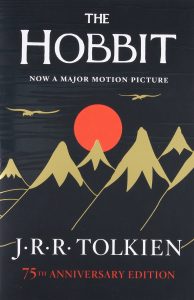
The Hobbit by J.R.R. Tolkien
What unfolds as Bilbo Baggins journeys to the Lonely Mountain to face Smaug the dragon?

Mrs. Frisby and the Rats of Nimh by Robert C. O’Brien
Can Mrs. Frisby and her fellow rats save their home?

The Spiderwick Chronicles by Tony DiTerlizzi and Holly Black
What happens when the Grace children discover a world of the faeries who don’t want to be found.
[/bs_citem]
[/bs_collapse]



